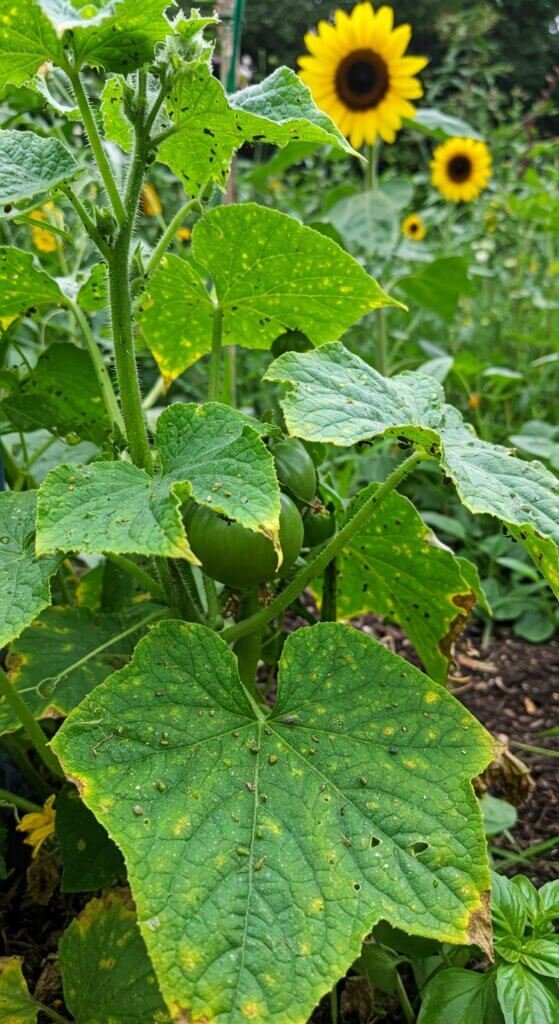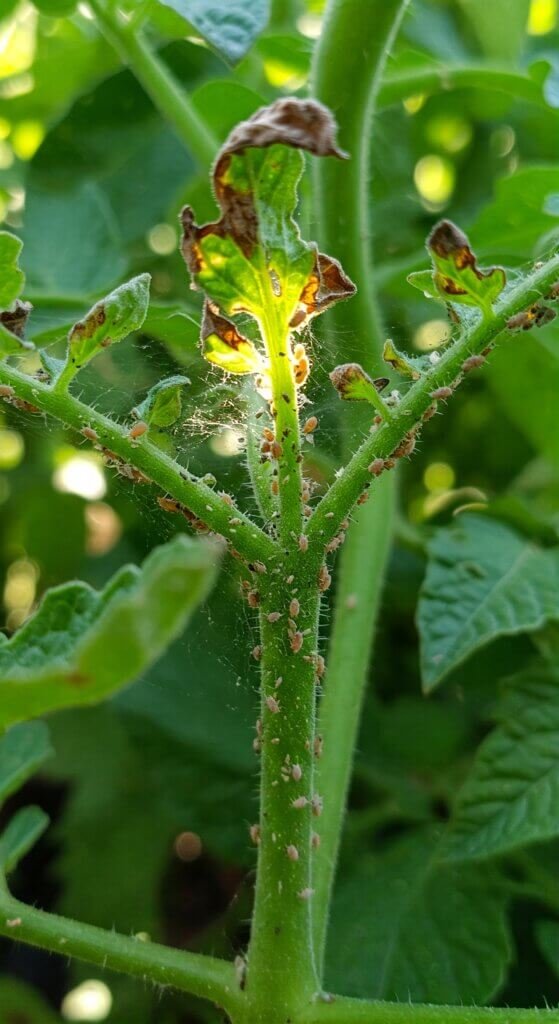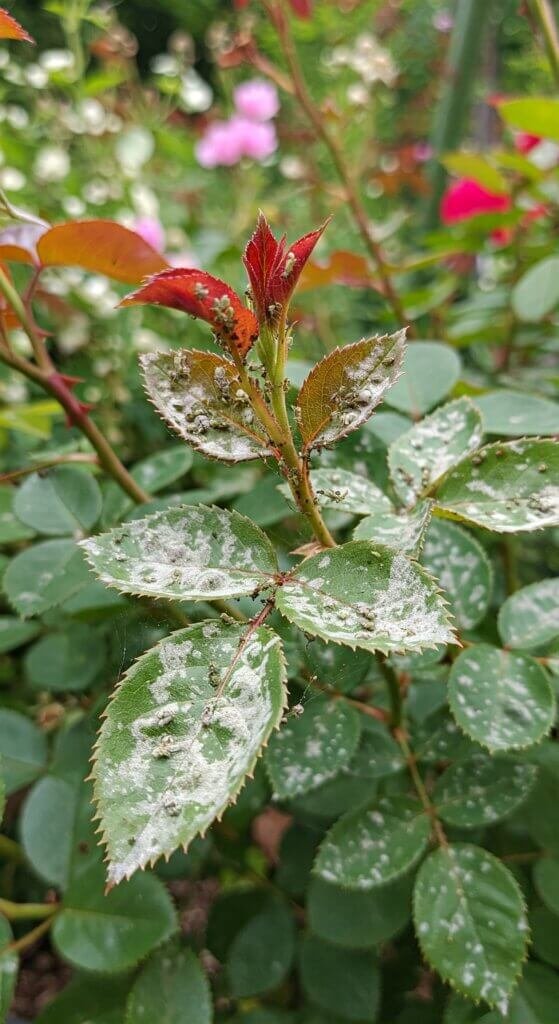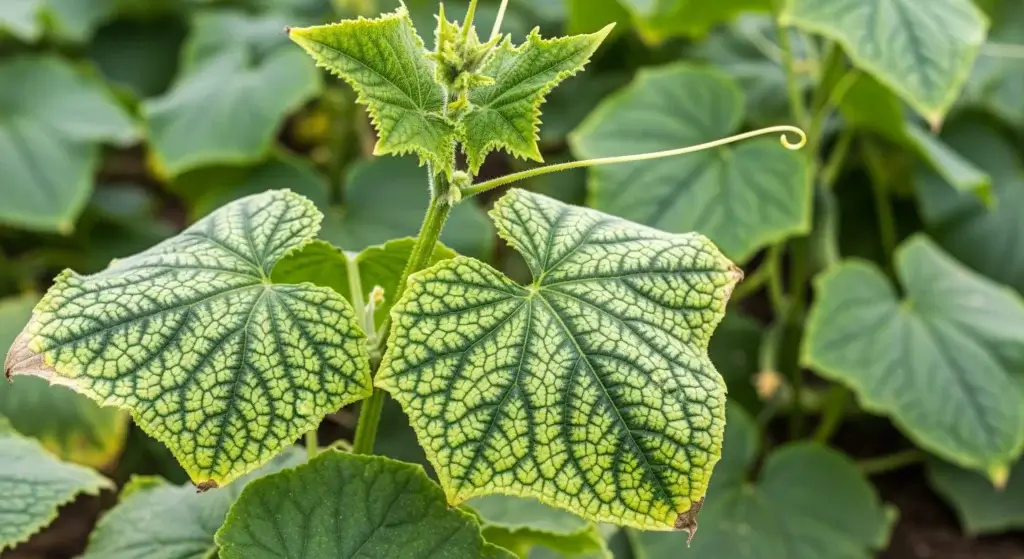
As your garden flourishes and blooms in full summer glory, so does the not-so-glamorous side of the season: pests and plant diseases.
Whether you’re growing fresh veggies or curating a flower-filled oasis, keeping your plants healthy means battling those garden invaders.
In this guide, we’ll walk you through everything you need to know about summer garden protection, from spotting trouble early to using organic methods to keep your plants safe.
Ready to be the superhero your garden needs? Let’s dig in!
Why Summer Is Prime Time for Pests and Diseases
Summer brings the heat—and not just for your plants.
Warm temperatures and higher humidity create the ultimate summer party for pests and plant diseases.
The usual suspects—aphids, spider mites, powdery mildew, and tomato blight—can take down your hard-earned garden in the blink of an eye if you don’t keep them in check.
- Heat-driven pest life cycles: Warm weather speeds up the growth of pests, making them multiply faster than a reality TV feud.
- Humid microclimates: Thick plant growth creates a cozy, humid environment where pests and diseases thrive like it’s a 5-star resort.
- Overwatering or poor airflow: Too much water or bad circulation is like giving fungal diseases an all-you-can-eat buffet.
- Pollinator love = Bug Magnet: While you’re helping the bees, some of those pollinators might also bring along unwanted guests like aphids or beetles.
Early Warning Signs to Watch Out For
Catching problems early is the key to saving your garden from pest or disease chaos.
Here’s your cheat sheet for spotting trouble before it gets out of hand:
Visual clues:
- Yellowing or curling leaves: If your plant’s leaves look like they’re having a bad hair day (yellowing, curling, or dropping), it could be a sign of pests, diseases, or both.
- Sticky residue: If your plants feel sticky, it’s not the rain—it’s probably aphids or whiteflies, leaving their sweet “gifts” behind.
- Webbing: If you see tiny webs on your plants, spider mites are likely living rent-free. Time to show them the door.
- Holes or chew marks: If your plants have holes like they’re in a zombie movie, caterpillars or beetles are probably the culprits.
- Powdery or fuzzy white patches: If your plant looks like it’s been dusted with powdered sugar, you’ve got a fungal infection brewing. Not the kind you can sprinkle on donuts.
- Wilting despite adequate watering: If your plant’s looking droopy but you’ve been watering like a responsible plant parent, root rot or bacterial wilt might be the villains.

Common Summer Garden Pests (and How to Beat Them)
Summer gardening is all about enjoying the fruits (or veggies) of your labor—until the pests show up like uninvited party crashers.
Here’s your guide to the most common summer garden pests and how to send them packing, so you can keep your garden thriving.
Aphids
Aphids are like the mosquitoes of the plant world—tiny, soft-bodied insects that suck the sap right out of your plants.
They often target new growth and like to hide under leaves, making them sneaky little invaders.
Control tips:
- Neem oil or insecticidal soap: Aphids hate the stuff. Spray it on the leaves and watch them flee.
- Ladybugs to the rescue: These little predators love aphids. Release them into your garden like you’re bringing in the Avengers.
- Water pressure: A strong spray of water can blast them off without harming your plant. Think of it like a gentle, plant-friendly car wash.
Spider mites
Spider mites are the true villains of hot, dry weather.
They cause stippling (tiny yellow spots) on leaves and leave behind fine webbing that makes your plants look like they’re auditioning for a Spiderman movie.
Control tips:
- Increase humidity: Spider mites love dry air. Turn up the humidity to make them uncomfortable.
- Horticultural oil or miticide: These work like a superhero squad against the mites.
- Damp cloth: Wipe down the leaves with a damp cloth to remove webbing and mites. Think of it like giving your plant a spa day.
Whiteflies
Whiteflies are the jet-setters of the pest world, flitting around your plants and sucking sap from the underside of leaves.
They also leave behind honeydew, which is a sticky mess.
Control tips:
- Yellow sticky traps: These traps are like the “fly paper” of the garden world. Whiteflies love them.
- Neem oil: Spray it on a weekly basis during an infestation to keep those whiteflies in check.
- Invite lacewings: Lacewings are like the “friendly neighbors” who will take care of the problem for you. They love to feast on whiteflies.
Caterpillars
Caterpillars love to munch on your garden’s leaves, leaving behind telltale signs of chewing damage and, well… frass (aka, their droppings).
They can do a lot of damage in a short time, especially if you let them multiply.
Control tips:
- Handpick them: This might feel a little gross, but it’s the most direct way to get rid of these plant-eating pests. Just pick them off and toss them away.
- Bt (Bacillus thuringiensis): This natural bacterium is like a biological weapon against caterpillars. They ingest it, and it messes with their digestion.
- Row covers: Protect your crops by covering them with floating row covers, which keep the pests out while still letting in the sun and rain. It’s like a protective force field for your plants.
Common Summer Plant Diseases (and What to Do About Them)
Pests aren’t the only summer troublemakers—plant diseases love warm, humid weather just as much.
Think of them like the drama queens of your garden: sneaky, high-maintenance, and totally capable of wrecking the whole vibe if you’re not watching closely.
But don’t worry—we’ve got the lowdown on the most common offenders and how to keep them in check.
Powdery Mildew
Looks like your plant got hit with a powdered sugar bomb—white, dusty patches show up on leaves and stems, especially in shady or overcrowded spots.
How to keep It in check:
- Airflow is everything: Space your plants out like introverts at a party. Good airflow helps stop mildew from spreading.
- Water smart: Avoid overhead watering. Wet leaves + warm weather = fungal fiesta.
- Fungicides: Use sulfur-based organic sprays. It’s like kryptonite for powdery mildew, minus the drama.
Blight
Blight shows up as dark spots on leaves, stems, or fruit, and it can wipe out your tomato or potato crop faster than a spoiler tweet after a new Marvel release.
How to fight back:
- Rotate crops like a pro: Don’t grow tomatoes or potatoes in the same spot year after year. It’s like changing the locks on a toxic ex.
- Prune problems fast: Remove infected leaves as soon as you see them. Don’t let the disease set up camp.
- Copper fungicide (use with care): It works, but only as a last resort. Overuse can affect your soil microbiome—treat it like antibiotics.
Root rot
Root rot is a silent killer.
Your plant looks fine—until it suddenly wilts and collapses.
The roots? A soggy, brown mess.
How to stay ahead:
- Well-draining soil only: No plant wants to live in a swamp. Use cactus mix or amend heavy soils with sand or perlite.
- Water early in the day: Water in the morning so soil can dry before nightfall. Plants hate going to bed wet—just like people in damp socks.
- Say goodbye when needed: If a plant is too far gone, don’t hesitate to toss it. Keeping it around only risks infecting others.
Leaf spot
Leaf spot shows up as little brown or black spots, sometimes with yellow halos.
They spread quickly and can stress your plant out big time.
Stop the spread:
- Clean up fallen leaves: Don’t give pathogens a comfy place to overwinter. Keep the garden floor tidy.
- Space plants out: Good air circulation helps leaves dry faster, which makes it harder for diseases to take hold.
- Natural sprays: A mix of baking soda and water or copper spray can slow or stop the spread. Kind of like plant sunscreen—with benefits.

Organic Pest and Disease Management Tools
If you’re going chemical-free (and let’s face it, who wants to risk harming the bees, the soil, or your family’s health?), you’ve got plenty of eco-friendly options to keep your garden safe from pests and diseases.
Here’s a rundown of your green thumb’s best friends—because sometimes, the best offense is a good, organic defense.
Natural sprays
Neem oil
The Swiss army knife of the organic world.
It’s both an insecticide and an antifungal.
It works by disrupting insect feeding and breeding, plus it fights off fungal infections like powdery mildew.
Think of it as your garden’s superhero, swooping in to save the day.
Horticultural oil
This one’s a little more stealthy.
It suffocates insect eggs and larvae by coating them, making it hard for them to hatch or grow.
It’s like the “silent ninja” of the garden, quietly keeping the pests in check without anyone knowing it.
Garlic-chili spray
Perfect for when you need a little spicy intervention.
This spray repels soft-bodied pests like aphids and whiteflies, making your garden smell like a fajita—without the drama.
Just blend garlic, chili, and water, and spray it on the leaves. It’s like setting up a bouncer for your plants.
Homemade remedies
Milk spray
This one’s a little weird, but it works.
Milk has antibacterial properties that can help get rid of powdery mildew.
Just dilute it with water and spray it on your plants.
It’s like giving your garden a mini spa treatment (but without the cucumber slices).
Baking soda solution
Baking soda is your go-to solution for preventing fungal diseases.
Mix it with water and a little bit of oil and you’ve got a homemade antifungal spray that keeps your plants healthy without any harsh chemicals.
It’s like an all-natural plant deodorant.
Dish soap + water
For a mild, easy-to-make insect control, mix a tiny bit of dish soap with water and spray it on soft-bodied insects.
It’s gentle on your plants but tough on pests.
Think of it like sending your pests to the “time-out corner” for a quick lesson in manners.
Physical barriers
Row covers
These mesh covers protect plants from flying and crawling pests.
It’s like giving your crops a protective blanket—perfect for those spring or early summer months when the bugs are ready to attack.
You wouldn’t leave your house without a door, so don’t leave your garden unprotected either!
Copper tape (for slugs)
Slugs are like the ninjas of the garden world—slipping through cracks and munching on your plants at night.
A strip of copper tape around your containers or raised beds creates a barrier that slugs can’t cross.
It’s like a “Do Not Enter” sign, but in copper form.
Diatomaceous earth
This powder is the Avengers of the garden’s defense system.
It’s made from fossilized remains of tiny organisms, and when pests crawl over it, it dehydrates them.
It’s non-toxic for humans and pets but ruthless against bugs.
Think of it as the Iron Man suit for your plants—tough and unyielding.
Companion Planting
Basil with tomatoes
Basil is like the sidekick every superhero needs.
When planted near tomatoes, it helps repel aphids and hornworms.
It’s like Batman and Robin—one’s got the brains, the other’s got the muscle. Together, they keep pests away!
Marigolds around borders
Marigolds are more than just pretty faces—they’re nematode fighters.
Planted around your vegetable garden, they help deter these root-eating pests.
They’re like the secret service of your garden, standing guard at the borders.
Nasturtiums as sacrificial crops for aphids
If you want to divert aphids away from your precious crops, plant nasturtiums.
Aphids love them, so they’ll focus on these plants instead of your tomatoes or beans.
It’s like using a decoy to distract the pests while your main plants stay safe.

Preventative Tips to Keep Your Garden Safe All Summer
Look—pest outbreaks and plant plagues are like surprise plot twists in a soap opera.
Totally dramatic, totally avoidable.
The best strategy? Build a garden so healthy it’s basically immune to drama.
Here’s how to make yours a pest-proof fortress of botanical bliss.
Healthy Soil
You are what you eat, right? Same goes for your plants.
When your soil is thriving, your plants are tougher, stronger, and less likely to catch a bug (literally).
Add compost like it’s your garden’s daily multivitamin.
Compost feeds the good microbes in the soil—think of it as gut health for your garden.
A happy microbe party underground means stronger root systems and better resistance to disease.
Test your pH once a year.
Plants can’t thrive if the soil is too acidic or alkaline—it’s like trying to charge your phone with the wrong cable.
You want a balanced pH (usually around 6–7 for most veggies).
Don’t overdo nitrogen.
Too much can make your plants grow fast and lush—but also soft, juicy, and super tasty to bugs.
It’s like sending out a “Free Salad Bar” sign for aphids.
Water Smartly
How and when you water makes a big difference.
Bad watering habits are like setting your plants up on a blind date—with fungus.
Water early in the morning.
This gives leaves time to dry before night, reducing the chance of fungal infections.
Plus, plants are like people—they need hydration before facing a hot summer day.
Drip irrigation = plant hydration goals.
It delivers water right to the roots, where plants need it.
No splashing on leaves (which fungi love), and way less wasted water.
Mother Nature gives it a gold star.
Keep the soil moist, not swampy.
Overwatering leads to root rot, and under-watering stresses plants out.
Think of it as watering Goldilocks-style—not too much, not too little, just right.
Space plants like they’re social distancing pros
Crowded plants = muggy microclimates = pest party central.
Keep your plants spaced like they’re in a yoga class, not a mosh pit.
Proper spacing allows air to circulate, keeping leaves dry and discouraging fungal diseases.
Plus, it gives each plant room to grow without competing for sunlight and nutrients.
Rotate crops annually
If you plant tomatoes in the same spot year after year, guess who else shows up?
Their uninvited exes: blight, rootworms, and soil-borne pathogens that never move out.
- Rotate your crops to break pest and disease cycles. It confuses the pests and gives the soil a break.
- Especially important for heavy feeders like tomatoes, peppers, and squash—those drama queens pull a lot of nutrients and attract the big troublemakers.
Clean garden tools
Your pruning shears may look innocent, but they can play the villain if they’re not cleaned properly.
One snip here, another there, and suddenly you’ve spread a disease like a bad rumor.
Disinfect tools between uses—especially when moving from one plant to another.
A quick dip in rubbing alcohol or a bleach solution can stop fungal and bacterial hitchhikers.

Final Thoughts: Outsmart Pests Like a Garden Ninja
Summer pests and diseases? Annoying—but beatable. Stay sharp, act fast, and keep things organic.
A healthy garden is your best defense (think of it like your plants hitting the gym).
- Keep an eye out.
- Clean your tools.
- Water smart.
- Grow strong, not stressed.
Want more garden hacks, pest-fighting tips, and eco-friendly ideas? Follow our blog—because your plants deserve to thrive like Beyoncé on a world tour.



